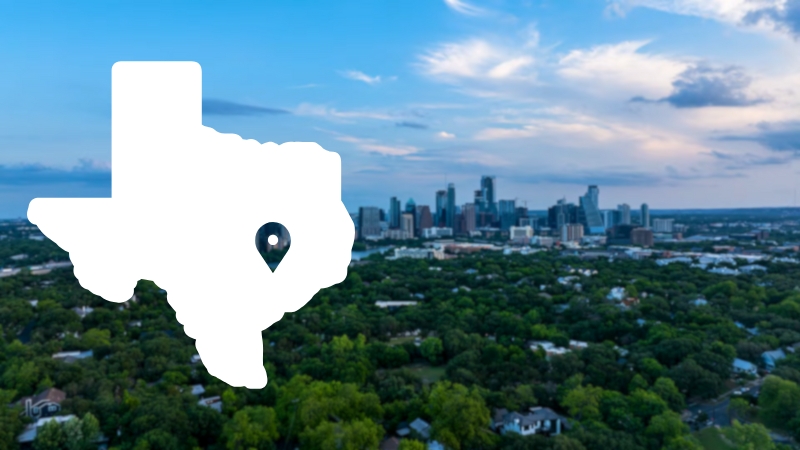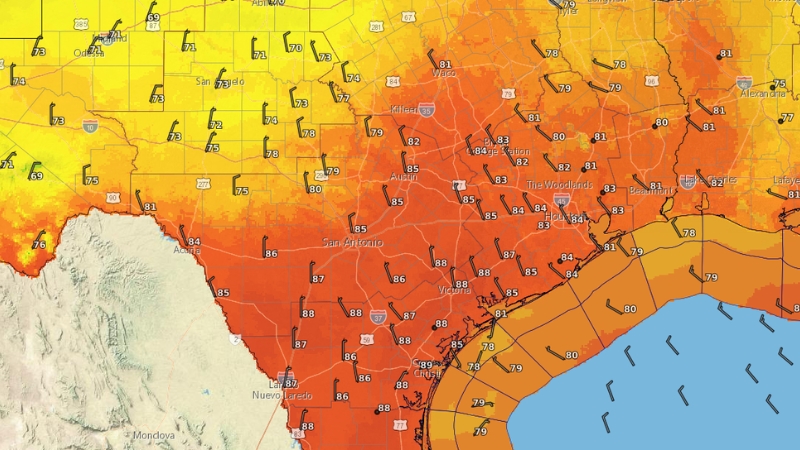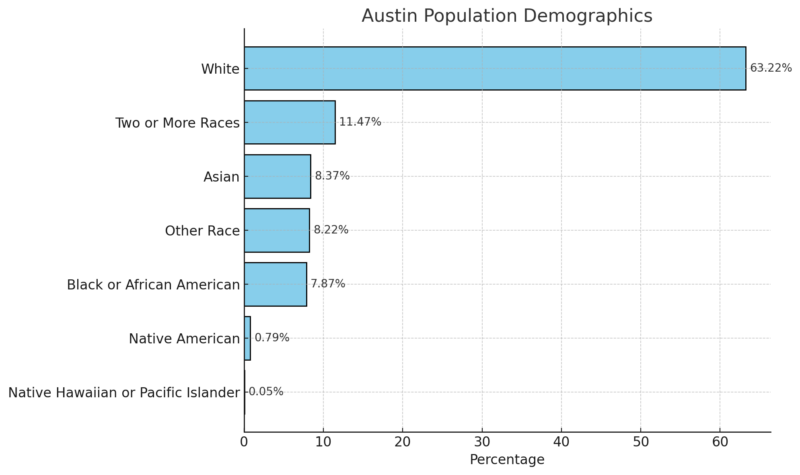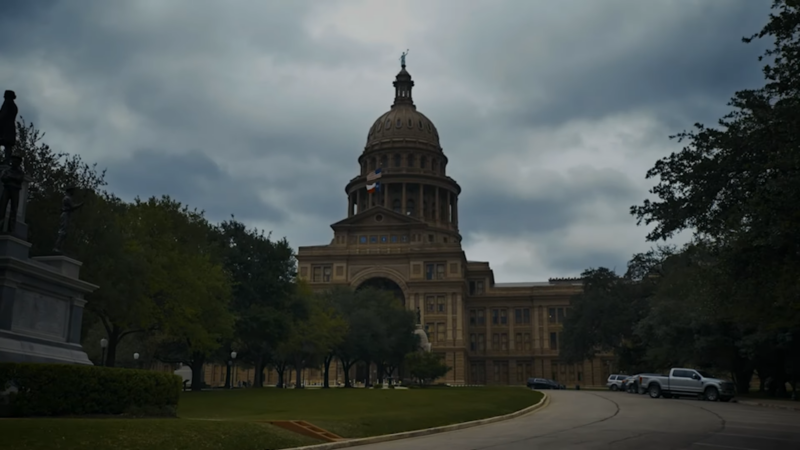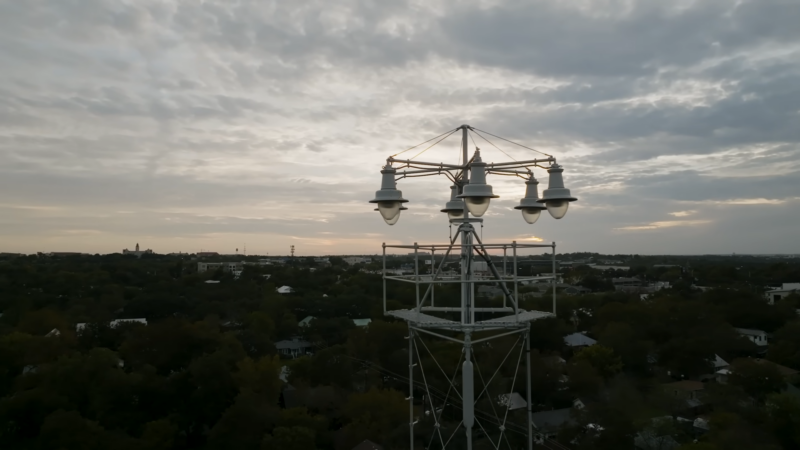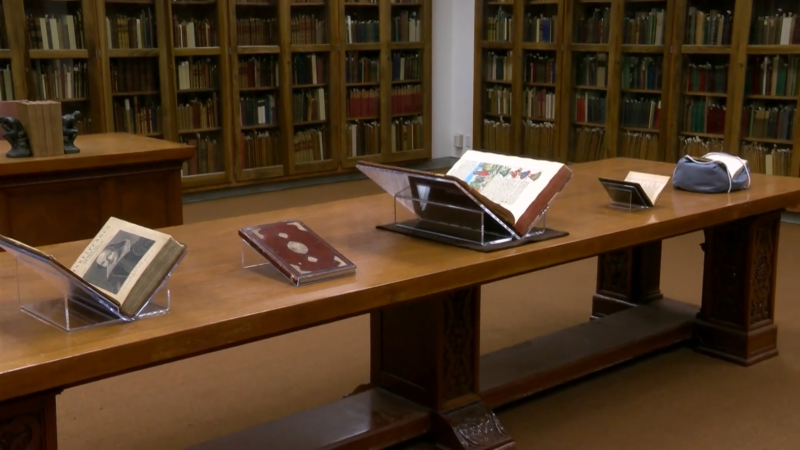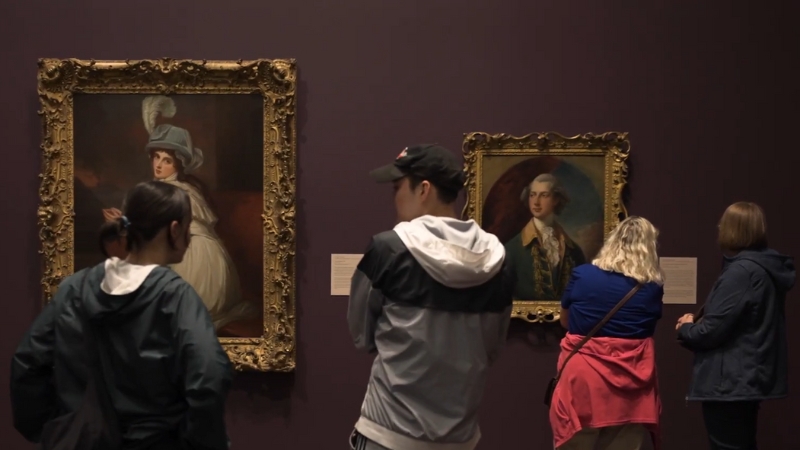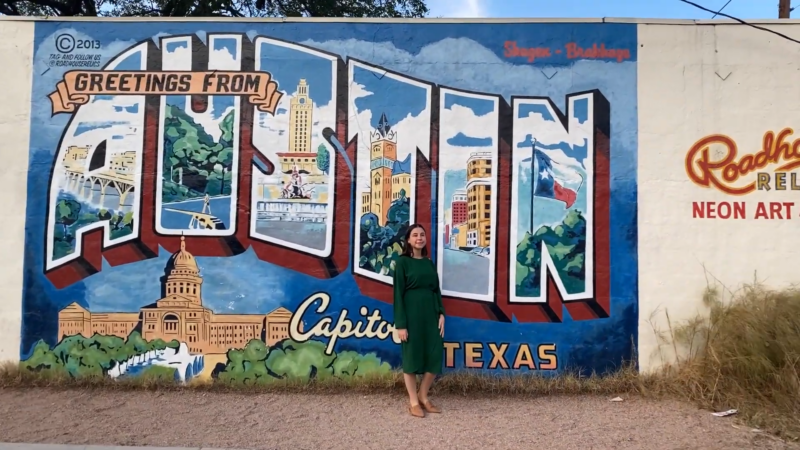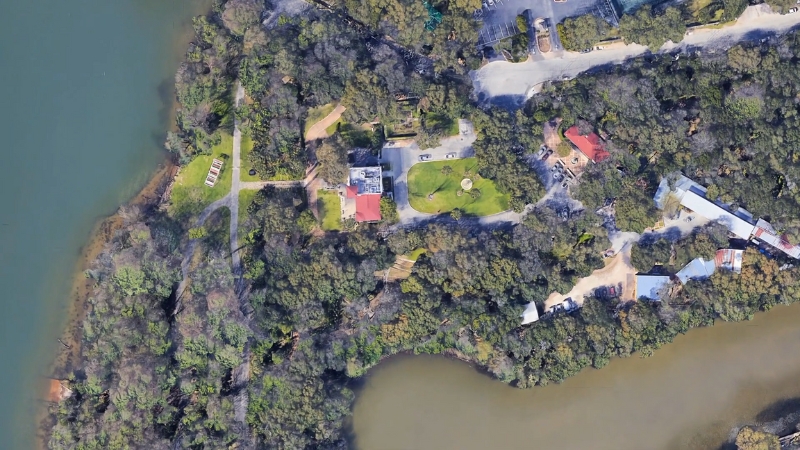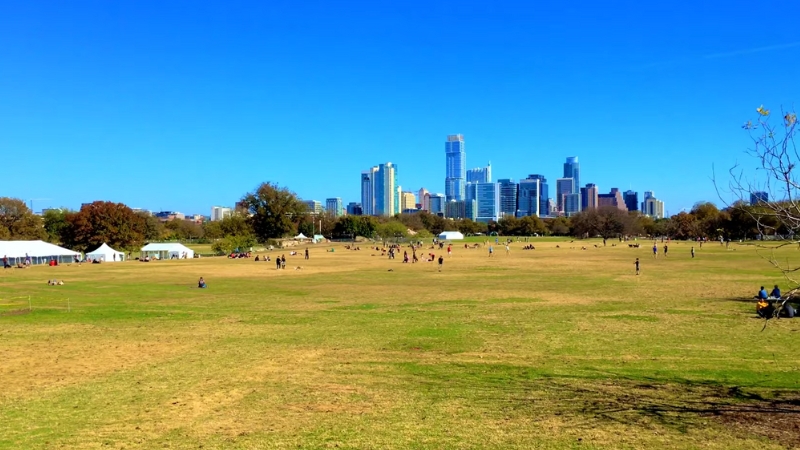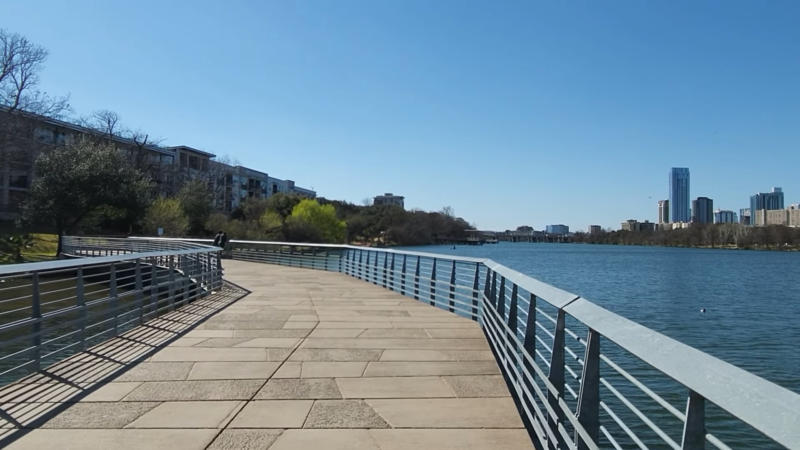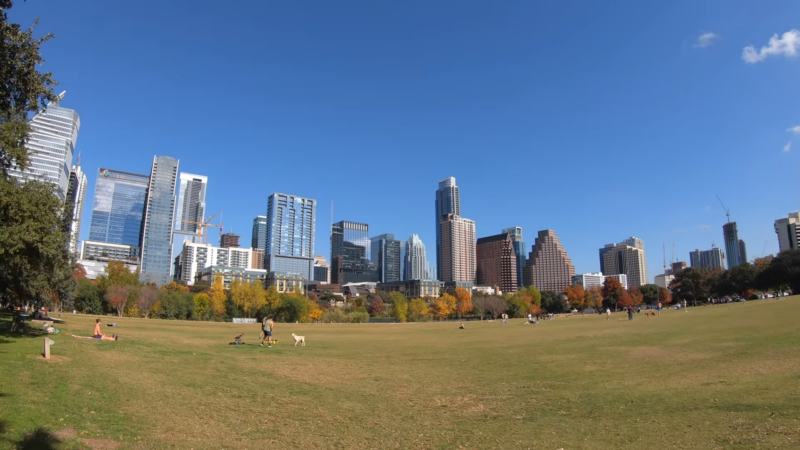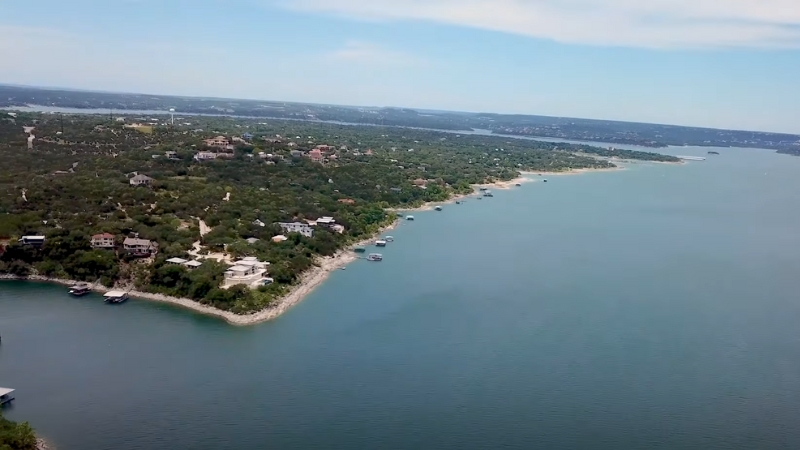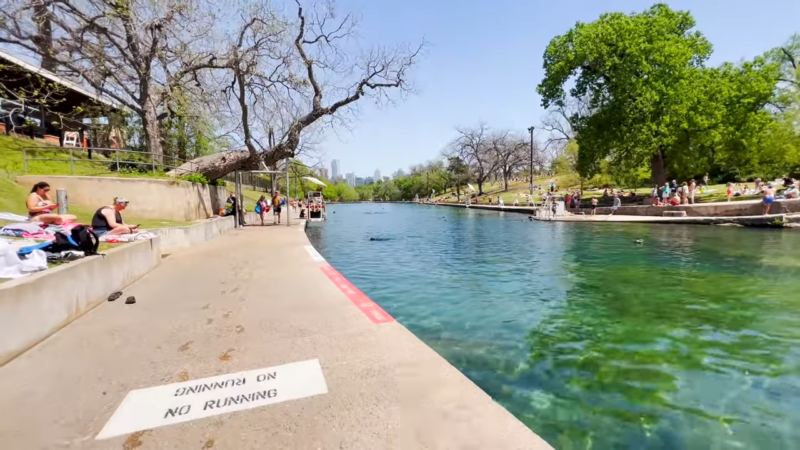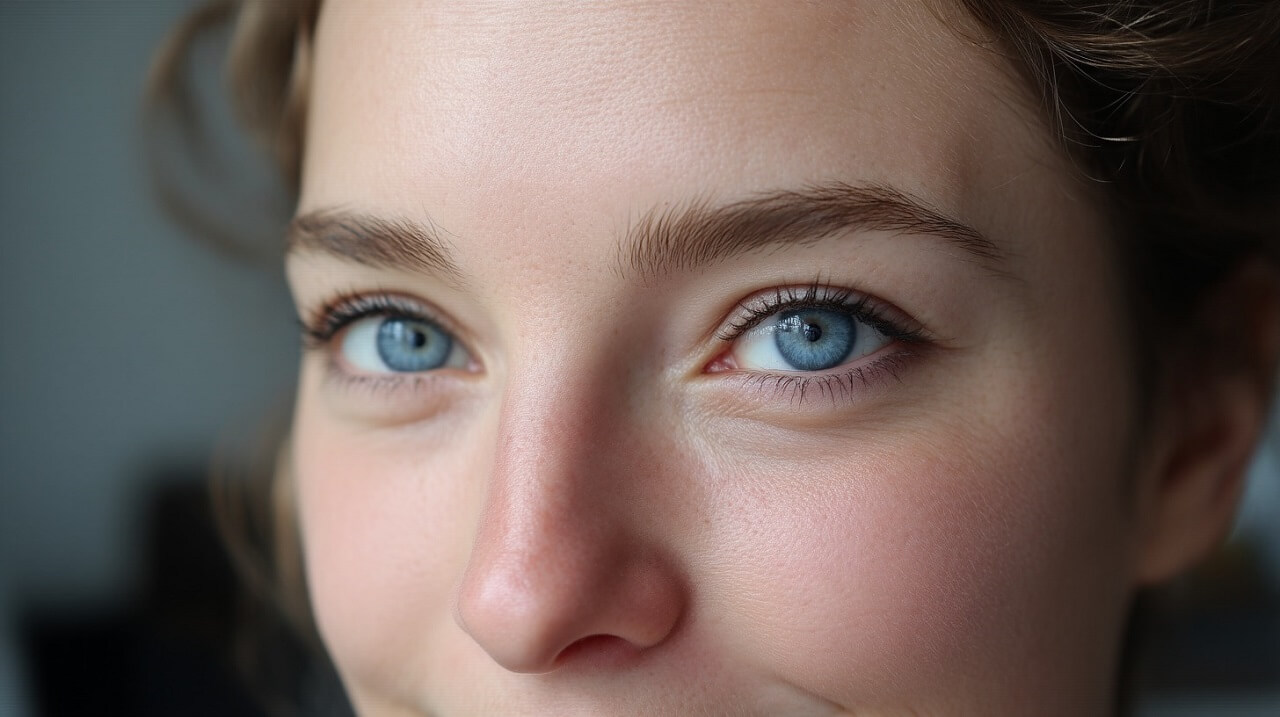Austin, the capital of Texas and the seat of Travis County, is located in south-central Texas along the Colorado River.
It sits about 195 miles southwest of Dallas, 80 miles northeast of San Antonio, and 165 miles west of Houston.
The city’s history traces back to the Texas Revolution (October 1835 – April 1836), after which Texas won independence from Mexico and became the Republic of Texas.
Initially, the republic lacked a designated capital, so in 1839, a commission selected the riverside village of Waterloo as the site.
Renamed Austin in honor of Stephen F. Austin, the city became the republic’s capital.
Six years later, in 1845, Texas was annexed by the United States and joined the Union as the 28th state.
Today, Austin has a population of around 984,567 with about 2,274,000 residents in the greater Austin-Round Rock-San Marcos metropolitan area according to Macrotrends.
The city is also home to the University of Texas at Austin, a major research university and the flagship institution of the UT System.
Table of Contents
ToggleGeography Map Of City
- Source: gisgeography.com, Austin spans 305 square miles, including 7.2 square miles of water
Austin, Texas, is the southernmost capital in the contiguous U.S., of the state of Texas along the Colorado River.
Nestled at the foot of the Balcones Escarpment, Austin covers 305 square miles, with 7.2 square miles being water.
The city’s landscape is defined by three artificial lakes within its borders: Lady Bird Lake, Lake Austin, and Lake Walter E. Long, all created by damming parts of the Colorado River.
Known for its varied topography, Austin’s eastern areas are flatter, while the western areas feature rolling hills, and limestone rock formations, and are part of the scenic Texas Hill Country.
Unique Climate and Severe Weather Patterns
- Source: digital.weather.gov/Screenshot, Austin has long, hot summers and mild winters
Austin sits in a transitional climate zone, blending characteristics of both arid desert regions and humid Southeast areas.
Officially classified as humid subtropical, Austin experiences long, hot summers and mild winters, with average yearly rainfall around 34 inches.
Summers often see highs in the 90s and above, while winters can be cool but relatively short, with occasional “Blue Norther” cold fronts.
The city also endures occasional ice storms, hail, and even tornadoes due to its proximity to Tornado Alley’s southern edge.
Austin’s Expanding Skyline
- Source: Youtube/Screenshot, The Independent and the Austonian are the tallest residential towers in the U.S. west of Chicago
Historically dominated by the Texas State Capitol and the University of Texas Main Building, Austin’s skyline has seen rapid growth.
Since the 2000s, the city has experienced a high-rise boom, transforming downtown with new residential, office, and hotel towers. Notably, The Independent and The Austonian are the tallest residential towers in the U.S. west of Chicago.
Austin also preserves historic moonlight towers—15 of these unique 165-foot structures from the late 19th century still illuminate parts of the city.
Parks, Trails, and Outdoor Recreation
Austin is rich in green spaces, with over 29,000 acres of parks.
Lady Bird Lake, a reservoir on the Colorado River, is a hub for outdoor activities, including kayaking, paddleboarding, and jogging along the Ann and Roy Butler Hike-and-Bike Trail.
The Ann and Roy Butler Hike-and-Bike Trail has been named Best City Trail in the 2022 @AustinChronicle Best of Austin awards! 🏆🧡 https://t.co/EGdrPO8iem
— The Trail Conservancy (@TheTrailATX) May 19, 2022
Nearby Zilker Park spans 350 acres and features the Zilker Botanical Garden, Umlauf Sculpture Garden, and the Austin Nature & Science Center.
Zilker is also home to the popular Barton Springs Pool, a natural, spring-fed pool maintained at a steady temperature year-round.
The Barton Creek Greenbelt, stretching 7.25 miles, offers rock climbing, hiking, and seasonal swimming holes like Twin Falls and Sculpture Falls.
Other popular spots include Hamilton Pool Preserve, a natural pool formed by a collapsed cave, and Hippie Hollow Park on Lake Travis, known as Texas’s only clothing-optional park.
Extreme Weather Events and Recent Challenges
Austin’s location makes it prone to periodic natural disasters. Severe droughts, like the one in 2011, caused record-low water levels across the state.
In 2021, Winter Storm Uri blanketed the city in snow, bringing prolonged power outages and water shortages that highlighted infrastructure challenges.
Most recently, the 2023 ice storm left thousands without power, leading to frustration and ultimately the firing of the city manager.
Austin Population
Austin, located primarily in Travis County (not Hays County), Texas, has a 2025 population of 984,567, marking a 1.94% increase since the 2020 census, which recorded 965,827 residents.
Growing at an annual rate of 0.48%, Austin is recognized as the fastest-growing city in the United States, with a projected metropolitan population reaching 3.2 million by 2030.
Population growth has been fueled by both young professionals and retiring baby boomers, drawn by the city’s vibrant culture and relative affordability, although rapid expansion has led to rising housing costs and intensified traffic congestion.
Settled in the 1830s, Austin has roots dating back over 11,000 years with early Spanish missions in the region by 1730.
Established as Waterloo in 1839, the town was renamed Austin in honor of Stephen F. Austin and selected as the capital of the Republic of Texas.
Throughout the 20th century, the city evolved from a segregated society into a multicultural urban center, with a significant rise in its Hispanic population.
- Austin population chart
With a median age of 34.2 years and a notable Hispanic population, Austin has seen a decline in its African American community, attributed to both migration patterns and mortality rates.
Austin’s average household income stands at $122,474, with a poverty rate of 12.43%.
Economic growth remains strong, with a forecasted growth rate exceeding 6% for the city from 2011 to 2016, a trend shared with other booming Texas cities.
Despite economic success, Austin faces a housing shortage as construction lags behind demand, leading to increased housing prices and a competitive real estate market.
Crime Data Overview
Austin’s total crime rate is 41.62 per 1,000 residents, making it safer than only 5% of U.S. cities as per Neighborhood Scout.
Residents have a 1 in 186 chance of being a victim of violent crime and a 1 in 28 chance of property crime.
Below is a summary of Austin’s crime data compared to national rates:
| Crime Type | Austin Report Total | Austin Rate per 1,000 | U.S. Rate per 1,000 |
|---|---|---|---|
| Violent Crime | |||
| Murder | 69 | 0.07 | 0.06 |
| Rape | 532 | 0.55 | 0.40 |
| Robbery | 945 | 0.97 | 0.66 |
| Assault | 3,699 | 3.80 | 2.68 |
| Property Crime | |||
| Burglary | 4,869 | 5.00 | 2.70 |
| Theft | 25,057 | 25.71 | 14.02 |
| Motor Vehicle Theft | 5,384 | 5.53 | 2.83 |
Austin experiences higher-than-average property and violent crime rates compared to national figures, with theft being the most common offense.
Key Austin Attractions
Congress Avenue Bridge
Each summer, this bridge is home to around 1.5 million Mexican free-tailed bats, the largest urban bat colony in North America.
Crowds gather at sunset to watch the bats take flight over Lady Bird Lake. The bridge offers a unique Austin experience and has become a beloved part of the city’s culture.
Texas State Capitol
- Source: Youtube/Screenshot, The Texas State Capitol attracts visitors and locals with its architecture and grounds
Completed in 1888, this historic building houses the Texas Legislature and Governor’s Office.
It’s recognized as one of the largest state capitols in the U.S. and is open to the public for tours.
The Capitol’s architecture and scenic grounds make it a popular destination for visitors and locals alike.
Driskill Hotel
Built in 1886 as the showplace of a cattle baron, The Driskill remains a landmark of legendary Texas hospitality. Located on Sixth Street in the heart of downtown Austin, our iconic, historic hotel is convenient to all that the city has to offer. pic.twitter.com/hgdfZlWWGs
— The Driskill (@TheDriskill) November 19, 2019
Built-in 1886, the Driskill is the oldest operating hotel in Austin and a downtown landmark. Known for its Romanesque architecture, it’s located on bustling Sixth Street.
The hotel is a popular spot for history enthusiasts and a hub of Austin’s social scene.
Moonlight Towers
- Source: Youtube/Screenshot, Only 15 of the original 31 Moonlight Towers still stand in Austin
Austin’s moonlight towers, installed in the late 19th century, are the last of their kind in the world.
Originally built to light up the city at night, only 15 of the 31 original towers remain.
These historic structures are now recognized as landmarks and contribute to Austin’s unique character.
Bullock Texas State History Museum
This museum presents Texas history through interactive exhibits across three floors and includes an IMAX theater.
It showcases artifacts and stories that capture the state’s diverse heritage.
The museum is a popular educational attraction for understanding Texas’s rich past.
Harry Ransom Center
- Source: Youtube/Screenshot, The Harry Ransom Center holds Jack Kerouac’s notebook and a Gutenberg Bible
Located at the University of Texas, this archive and museum holds culturally significant artifacts, including Jack Kerouac’s notebook and an original Gutenberg Bible.
The center’s rotating exhibits offer unique insights into literature, film, and the arts.
It’s a key research library and a favorite spot for history and culture enthusiasts.
Blanton Museum of Art
- Source: Youtube/Screenshot, The Blanton is a central destination for art lovers visiting Austin
Situated on the UT campus, the Blanton houses Austin’s largest art collection, with pieces spanning European, American, and Latin American art.
Known for its diverse exhibits and permanent collection, it includes nearly 18,000 works.
LBJ Presidential Library
This library holds 45 million pages of historical documents, including President Lyndon B. Johnson’s papers.
It offers exhibits on LBJ’s presidency, the civil rights era, and the social changes of the 1960s.
The library provides visitors with a comprehensive view of Johnson’s impact on American history.
Austin Murals
- Source: Youtube/Screenshot, These murals draw visitors and are key to Austin’s culture
Austin’s murals, like the “Greetings from Austin” on First Street, are iconic street art pieces that celebrate the city’s creative spirit.
These murals attract visitors for photos and are integral to Austin’s visual culture. The city’s mural scene is constantly evolving, reflecting its dynamic community.
The Contemporary Austin
- Source: Google Earth, It presents modern and contemporary art indoors and outdoors
This community art museum operates two venues: the Jones Center downtown and the Laguna Gloria sculpture park.
It showcases modern and contemporary art in both indoor and outdoor settings.
The museum is a prominent supporter of the local art scene and a cultural hub.
Zilker Park
- Source: Youtube/Screenshot, Home to Barton Springs Pool and the Austin City Limits Music Festival
Located along the Colorado River, Zilker Park is a 350-acre green space with recreational activities and events.
It’s home to attractions like the Barton Springs Pool and hosts the annual Austin City Limits Music Festival.
The park is a favorite for outdoor activities, family outings, and cultural events.
Mount Bonnell
Mount Bonnell offers panoramic views of Austin and the surrounding hill country from one of the highest points in the city.
The scenic overlook has been a popular spot for picnics, hikes, and photo opportunities.
Visitors enjoy the 775-foot summit for a unique perspective on Austin’s natural landscape.
Circuit of the Americas (COTA)
COTA is a premier racing facility that hosts the Formula 1 United States Grand Prix and the Motorcycle Grand Prix of the Americas.
Located in Elroy, just outside Austin, it draws motorsport enthusiasts from around the world.
Besides races, COTA also hosts concerts and major events throughout the year.
Lady Bird Lake
- Source: Youtube/Screenshot, It’s a key area for outdoor activities and views of downtown Austin’s skyline
Lady Bird Lake, formed by the Longhorn Dam, is a central recreational spot for paddleboarding, kayaking, and rowing.
The surrounding Ann and Roy Butler Hike-and-Bike Trail loops 10 miles around the lake.
Auditorium Shores
- Source: Youtube/Screenshot, A prime spot for Austin’s music and cultural events
An urban park on Lady Bird Lake, Auditorium Shores is the site of many music events, including South by Southwest performances.
This popular open space offers stunning views of downtown Austin and is a hotspot for festivals and outdoor gatherings.
Austin Zoo
The Austin Zoo is a rescue zoo focused on providing sanctuary for animals rather than traditional exhibits.
What began as a small goat ranch has expanded to house various species, educating visitors on conservation and animal care.
The zoo’s mission and intimate setting make it a family-friendly attraction with a focus on rescue and rehabilitation.
Austin Aquarium
The Austin Aquarium is a hands-on facility where visitors can touch and feed fish, reptiles, and birds.
Located in a strip mall, it’s designed as an interactive space ideal for family outings.
Its hands-on approach to marine life education makes it a unique option for families and children.
Texas Highland Lakes
The Highland Lakes system consists of six lakes, with Lake Buchanan as the largest and others including Lake Travis, Lake Austin, and Lake Marble Falls.
These lakes are popular for boating, fishing, and swimming, with parks and recreation areas along the shores.
Lake Travis’s Hippie Hollow Park is notable as the only legally recognized clothing-optional park in Texas.
Barton Springs Pool
- Source: Youtube/Screenshot, Famous for its clear, cool waters and scenic views
Located within Zilker Park, Barton Springs Pool is a natural swimming area fed by underground springs and maintained at 68°F year-round.
It’s one of the largest natural urban swimming pools in the U.S. and attracts swimmers year-round.
The pool is a quintessential Austin experience, known for its clear, cool waters and scenic surroundings.
References:
- Macrotrends – Austin Population Growth
- National Weather Service – Austin Climate Patterns
- Neighborhood Scout – Crime Statistics in Austin


